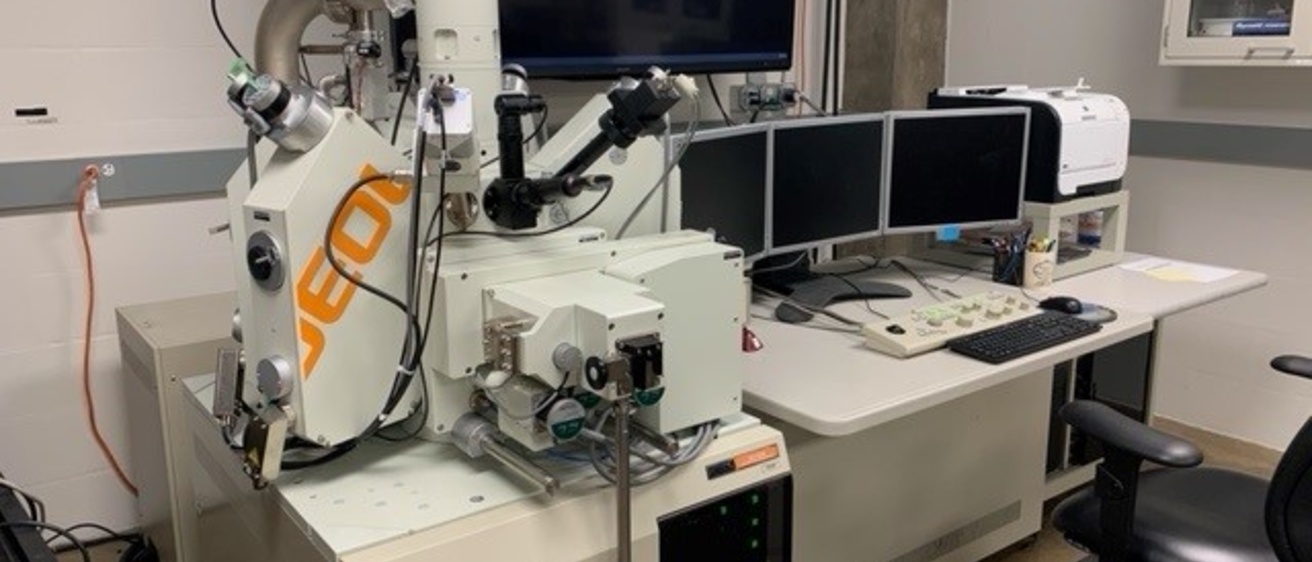Electron microprobe (EMP), also known as electron probe microanalyzer (EPMA), is an analytical tool designed to rapidly determine the chemical composition of solid-state materials at very small spatial scales (areas ≥1 micron or 1/1,000,000 of a meter). EPMA utilizes a focused beam of high-energy electrons to excite X-rays characteristic of the individual elements within a solid material. The instrument can quantitatively measure the concentrations of all elements from atomic number 4 (Be) to 92 (U), some at detection limits less than 10 parts per million (ppm). EPMA has a broad range of scientific applications and is used in a variety of fields including geology, biology, archeology, material science, chemical, mechanical and biomedical engineering, physical and biological chemistry, solid-state physics, metallurgy, and electronics.
The MATFab facility houses a JEOL JXA-8230 Superprobe equipped with 5 wavelength-dispersive spectrometers and 8 large-format diffracting crystals- LDE1L (1); TAPL (1); PETL (3); LIFL (3). This allows for the quantification of elemental concentrations at the single ppm level (i.e. <10 ppm). The JXA-8230 is also equipped with back-scattered electron (BSE), secondary electron (SE), and cathodoluminescence (CL) detectors for high-resolution imaging, and an energy-dispersive spectrometer (EDS) for rapid semi-quantitative analyses.
The facility is also equipped with a brand new Nikon Eclipse Ci POL polarizing microscope outfitted with a high-definition Nikon DS-Fi2 digital camera, an Olympus SZX7 stereomicroscope, and a top-of-the-line Cressington 208C high vacuum carbon coater with a tilting rotary stage, high-resolution thickness monitor, and metal evaporating capabilities. For sample preparation support, we also partner with the Petrographic Facility, which is housed in the University of Iowa Department of Earth and Environmental Sciences.
This instrument is located in IATL 198 and is managed by Jackie Feng.
